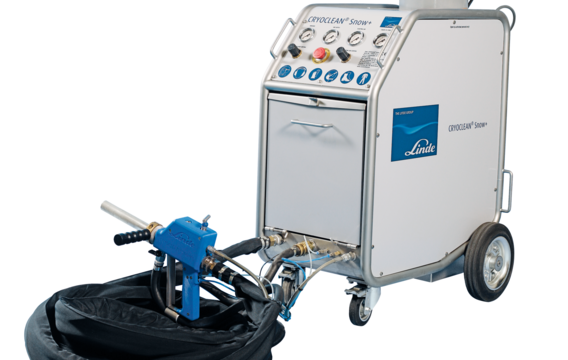By means of compressed air and Laval nozzles, the particles are blasted on the surface to be cleaned.
For heavy-duty cleaning operations, an abrasive agent can be mixed in with the dry ice particles. With this process, much less abrasive material is needed to remove the dirt than with conventional sand blasting.
CRYOCLEAN snow+ can use the benefits of both methods: avoidance of moisture and solvents using dry ice and the abrasiveness of solid blasting agents.
Thus it is possible to minimize operating costs by reducing the volume of abrasive material required along with the associated disposal costs.
CRYOCLEAN snow+ is predominantly designed for manual or semi-automated operation.
BOC offers dedicated, patented blasting hardware, supply solutions for liquid carbon dioxide (cylinders or bulk CO2 combined with our PRESUS® C supply systems) and several types of abrasive blasting agents.

